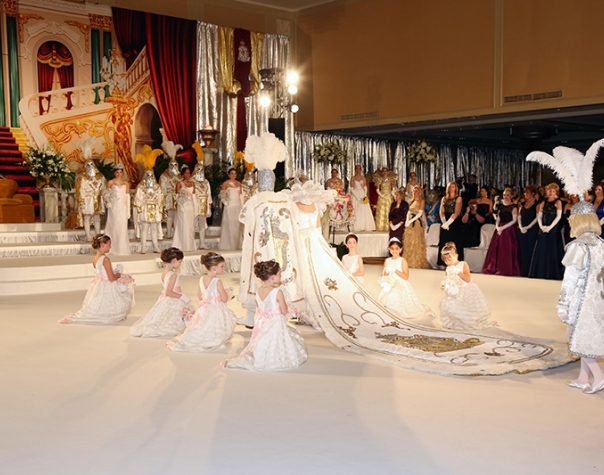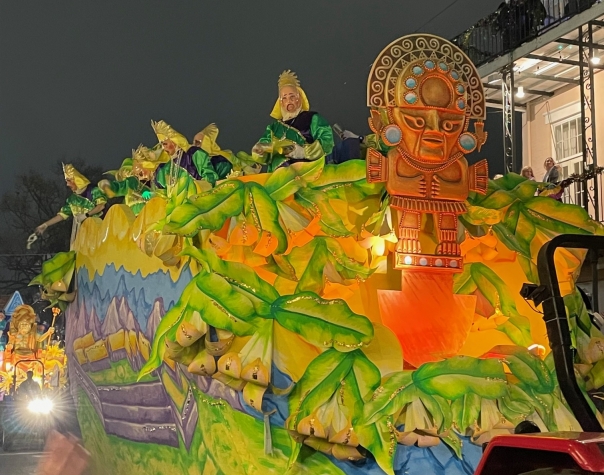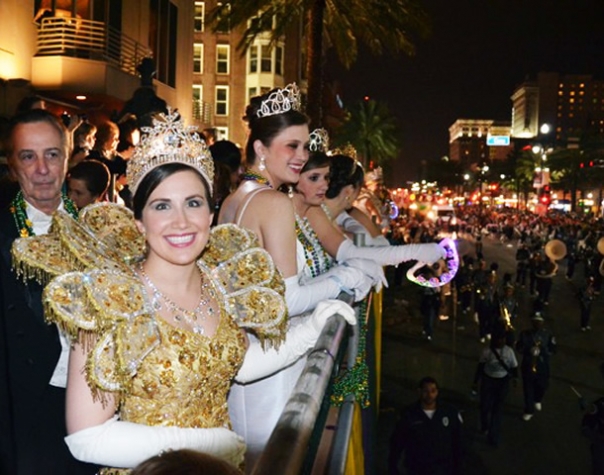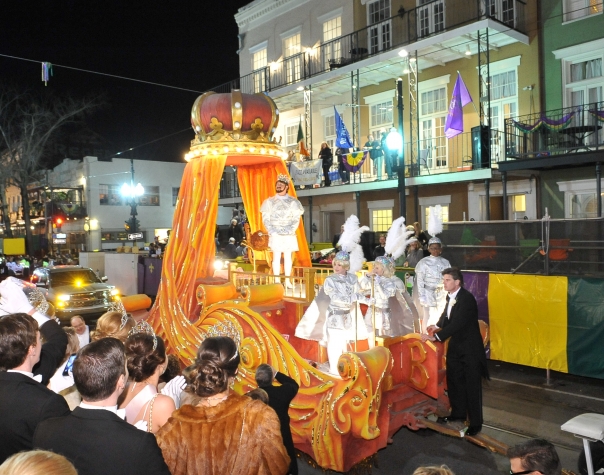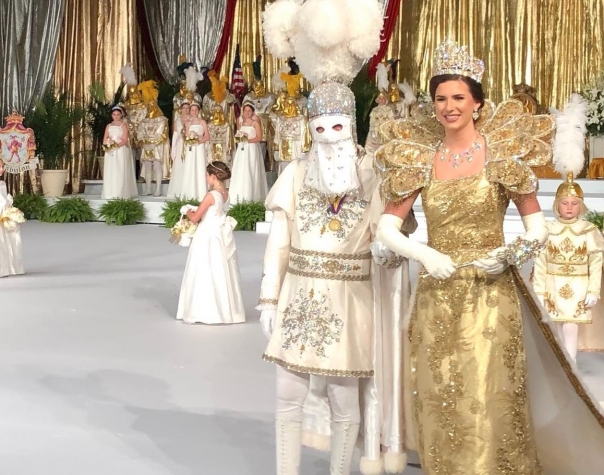History
The Knights of Babylon was founded in 1939 by a group of professional men who wanted to stage a first class parade for the public and a first class tableau ball for their ladies. Widely respected as one of the iconic New Orleans Carnival organizations, Babylon annually presents the first evening parade on the Thursday before Fat Tuesday. Many people consider Babylon the kick-off parade for Mardi Gras weekend, and it is not unusual to hear from a local that, “CARNIVAL BEGINS WHEN BABYLON ROLLS."
Originally known as the Jesters Club, the Knights of Babylon organization continues to adhere to the traditions of its founding members — including the presentation of an elaborate and visually stunning tableau ball and a formal supper dance thereafter. Other Babylon traditions include keeping the identity of its king, Sargon, secret; likewise, the theme of the parade remains secret until Babylon stages for its traditional uptown route. Sargon, king of Assyria (722-705 b.c.), is reputed to have built the city of Babylon. His namesake reigns over all the proceedings of the Knights of Babylon’s parade and ball.
The majesty and elegance of the Knights of Babylon is reflected in the name the club’s founders chose for this perennial favorite Mardi Gras organization. Babylon, the Capital of Babylonia, was the center of civic, commercial and cultural life in ancient Mesopotamia, which was within the borders of current-day Iraq. Babylon became one of the most important cities of the ancient Middle East when Hammurabi (1792-1750 BC) made it the capital of his kingdom of Babylonia. Today, the Knights of Babylon pay homage to the splendor of this fabled ancient city by annually presenting one of the most exquisite traditional Mardi Gras parades, along with its attendant festivities, in the great and indomitable city of New Orleans.
